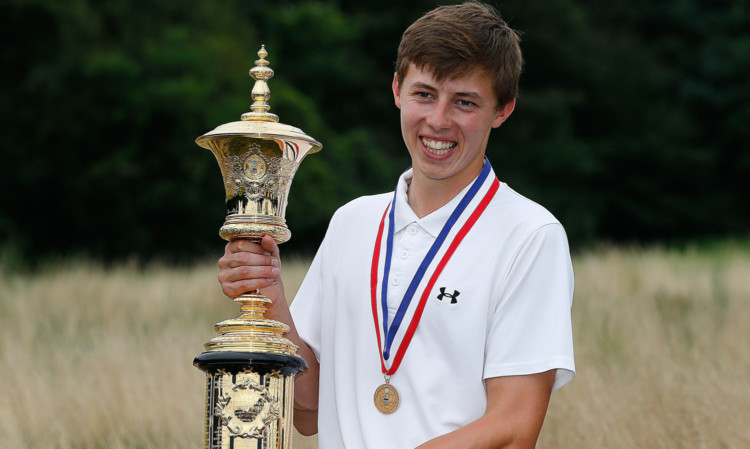The news that the young amateur golfer Matthew Fitzpatrick has dropped out of college in America after just one term is intriguing.
Apart from curling (and the bagpipes!) one of the subjects that gets raised most of all when I’m being interviewed for the papers is my golf and the offers I had of scholarships in the States.
I’m sure I would have enjoyed it, but a couple of weeks away from going for a gold medal in the Olympics, I certainly don’t have any regrets about choosing curling.
The chances of getting as close to the top in golf as I have in curling would have been much smaller.
The golfer Kelsey MacDonald is a good friend of mine so I’ve had a bit of an insight into starting out as a young pro.
Usually the dilemma for a player like Fitzpatrick, who won the Silver Medal at The open and then topped that off with the US Amateur title – is whether to cash in straight away on the opportunities that come your way and turn pro the same season like Justin Rose and Tom Lewis.
It’s probably the sensible thing to do because you can lose your form quickly in golf, and the tournament invites and sponsorship opportunities may not be there in four years’ time at the end of a degree.
But Fitzpatrick and his dad seemed determined he would do it the old fashioned way and complete his education so he had something to fall back on.
This week he has dropped out of the college that Luke Donald went to but it wasn’t actually to turn pro. It’s reported to be because he was struggling to juggle studies and golf.
I can relate to that because up until a few years ago I was able to keep playing the golf pretty seriously at the same time as the curling, but the golf had to be sacrificed when I started curling full-time. Although it’s a winter sport, there’s always gym work and we practice in the summer as well.
So if he wasn’t coping with two pulls on his time then there really was no option.
To be the top at any sport (and that means amateur golf, which is professional these days in a lot of ways) it takes full-time dedication.
But I must admit I’m a bit bemused that he’s still staying amateur, because apart from the invites to play in the Masters, the US Open and The Open, there’s not many other reasons not to go professional now.
It looks like he wants to dedicate himself to his golf, which nobody could argue with, but it might be wise if he doesn’t stay amateur as long as he has said he will (through to the Walker Cup in 2015).
He’s already played The Open so I’d be tempted to take part in the Masters then join the paid ranks. Because it takes place so early in the season it would give him plenty of time to take advantage of sponsors’ invitations and secure his tour card.
